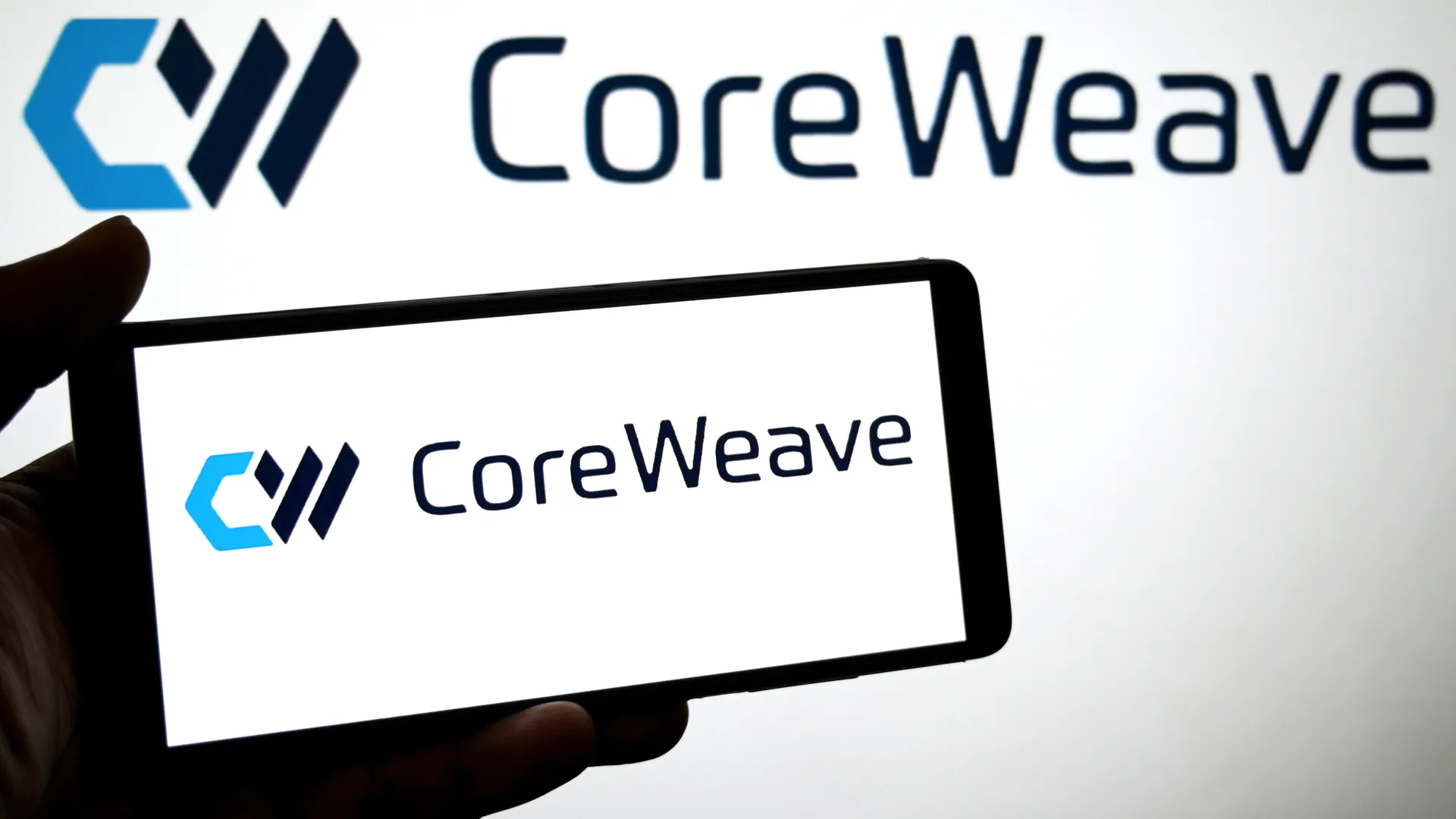The technology sector is in a constant state of flux, driven by rapid innovation and strategic consolidations. In particular, the burgeoning field of Artificial Intelligence (AI) is creating unprecedented demand for specialized computing infrastructure, leading to significant shifts in the digital landscape.
Amidst this dynamic environment, a major development is unfolding that could reshape the future of high-performance computing. CoreWeave (CRWV), a leading cloud provider specializing in AI workloads, is reportedly in advanced discussions to acquire Core Scientific (CORZ), a prominent operator of digital infrastructure for both AI and cryptocurrency mining.
This potential merger is generating considerable buzz in the market, with Core Scientific’s stock experiencing a significant surge following the news. The Wall Street Journal first reported on these ongoing talks, indicating that a deal could be finalized “in the coming weeks.” While specific financial details remain under wraps, this development underscores the growing strategic importance of companies that own and operate the physical infrastructure essential for powering the computationally intensive demands of modern AI applications.
The potential acquisition signifies a deeper integration of AI-focused cloud services with underlying data center capabilities, aiming to create a more robust and scalable solution for the accelerating AI revolution.
The Companies at Play: CoreWeave and Core Scientific
Understanding the core businesses of both entities sheds light on the strategic value of this potential acquisition.
CoreWeave: Powering the AI Revolution
CoreWeave stands at the forefront of the artificial intelligence boom, positioning itself as a specialized cloud infrastructure provider. Unlike traditional general-purpose cloud services, CoreWeave has meticulously built its cloud platform specifically for GPU (Graphics Processing Unit) workloads. This focus is crucial because GPUs are the computational backbone for most cutting-edge AI development, including machine learning, deep learning, and generative AI applications.
CoreWeave provides developers and enterprises with access to massive clusters of these high-performance GPUs, essential for training complex AI models, running sophisticated simulations, and managing other demanding computational tasks.
The company’s expertise extends beyond merely providing hardware; it also develops its own chip management software, optimizing the performance and efficiency of its GPU infrastructure. CoreWeave prides itself on offering a Kubernetes-native environment, allowing clients to deploy and manage their AI workloads with flexibility and scalability. Its client roster includes major technology firms, with reports indicating that Microsoft accounts for a significant portion of its revenue (62% in 2024, according to its IPO filing).
This demonstrates its role as a critical intermediary, providing access to highly sought-after Nvidia GPUs for companies like Meta Platforms and IBM, which are at the cutting edge of AI innovation. CoreWeave made headlines with one of the first major Initial Public Offerings (IPOs) of the current AI boom, going public in March of this year. Its stock has since surged impressively, gaining nearly 300% since its IPO, reflecting strong investor confidence in its specialized approach to AI cloud computing.
Core Scientific: Digital Infrastructure and Diversification
Core Scientific operates as a prominent provider of digital infrastructure, initially gaining significant recognition within the cryptocurrency mining sector. The company designs, builds, and operates large-scale data centers primarily focused on Bitcoin mining. Its business model traditionally revolved around two key segments: Digital Asset Self-Mining, where it mines Bitcoin for its own account, and Digital Asset Hosted Mining, where it provides hosting services to third parties who operate their own mining equipment within Core Scientific’s facilities.
However, recognizing the burgeoning demand for high-performance computing beyond cryptocurrency, Core Scientific has strategically diversified its operations into HPC (High-Performance Computing) Hosting, specifically catering to the needs of AI and other data-intensive applications. This pivot leverages its existing infrastructure, which is uniquely capable of handling the extreme thermodynamic and power loads required by advanced computing. Core Scientific boasts one of the largest owned infrastructure footprints among publicly listed miners in North America, with a substantial 1,300+ megawatts of contracted power capacity.
This extensive network of energy-efficient data centers across various U.S. states (including Georgia, Kentucky, North Carolina, North Dakota, and Texas) makes it an attractive target for companies like CoreWeave that require massive, reliable, and scalable infrastructure to support their AI operations. Core Scientific’s ability to provide high-density colocation solutions, optimized for AI model training and inference, positions it as a critical player in the growing digital infrastructure market.
The Acquisition Talks: A Renewed Pursuit
This isn’t CoreWeave’s first attempt to acquire Core Scientific, highlighting the latter’s increasing strategic value.
History of the Bid and Stock Surge
The current acquisition talks between CoreWeave and Core Scientific are not a new development; they represent a renewed pursuit following a prior unsuccessful attempt. CoreWeave previously tried to acquire Core Scientific last year, making an offer of $5.75 per share. At the time, this bid valued Core Scientific at just over $1 billion. However, Core Scientific’s management and board rejected the offer, deeming it too low and believing it significantly undervalued the company’s assets and future potential.
Since that rejected offer, Core Scientific’s stock has experienced a remarkable turnaround and substantial growth. The company’s shares had been trading in the $12 range prior to the most recent news of renewed acquisition talks. The Wall Street Journal’s report of CoreWeave’s renewed interest immediately sent Core Scientific’s stock soaring, vaulting it above $15 per share.
In afternoon trading, Core Scientific (CORZ) was up an impressive 27%, reflecting strong market excitement and speculation about a potentially higher valuation in any finalized deal. This significant increase in stock price indicates that Core Scientific’s strategic pivot towards AI infrastructure and its inherent value in the data center market have become much clearer to investors since CoreWeave’s initial offer. The current market capitalization of Core Scientific now stands at approximately $3.7 billion, more than triple the valuation from CoreWeave’s previous bid, demonstrating a dramatic shift in perceived value.
Ongoing Partnership and Strategic Alignment
Crucially, the renewed acquisition talks are underpinned by a strong and existing working relationship between CoreWeave and Core Scientific. The two companies have collaborated for years, forging a strategic partnership that highlights their synergistic operations. A particularly significant development in this partnership occurred last June, when Core Scientific announced a series of long-term contracts with CoreWeave.
These agreements stipulated that Core Scientific would provide billions of dollars worth of business from CoreWeave by supplying hundreds of megawatts of infrastructure hosting capacity specifically for CoreWeave’s high-performance computing operations. These 12-year hosting deals are designed to meet CoreWeave’s rapidly expanding demand for GPU-accelerated compute power, which is critical for its AI cloud services.
This established partnership demonstrates a clear strategic alignment. CoreWeave, as an AI hyperscaler, constantly requires more power and data center space to meet the insatiable demands of its AI clients. Core Scientific, with its vast owned infrastructure and expertise in managing high-density, energy-intensive environments, is perfectly positioned to provide this capacity. The existing contractual relationship not only provides Core Scientific with a significant revenue stream but also validates its strategic shift towards AI hosting.
A full acquisition would further integrate these operations, potentially streamlining resource allocation, enhancing operational efficiencies, and solidifying a vertically integrated solution for AI computing, from raw power and data center space to specialized cloud services. This deep existing collaboration suggests that both companies understand each other’s operations well, which could facilitate a smoother integration should a deal materialize in the coming weeks.
Market Context: The AI Infrastructure Gold Rush
The CoreWeave-Core Scientific talks are emblematic of a broader trend: the surging demand for AI infrastructure.
Unprecedented Demand for Data Centers
The discussions between CoreWeave and Core Scientific are unfolding within a backdrop of unprecedented demand for high-performance data center infrastructure, driven primarily by the explosive growth of artificial intelligence. The development and deployment of complex AI models, particularly generative AI, require enormous amounts of computational power.
This power is primarily delivered by Graphics Processing Units (GPUs), which consume significant electricity and generate substantial heat, necessitating specialized data center environments. The current surge in AI development has led to a global shortage of data center space and power capacity. Companies are scrambling to secure the necessary infrastructure to train larger models, perform faster inferences, and scale their AI operations.
This “data center gold rush” has made companies like Core Scientific, which own and operate large-scale, high-density data centers, incredibly valuable. These facilities are purpose-built to handle the extreme power loads and cooling requirements of modern AI servers. The demand extends beyond just space; access to reliable and affordable power sources is equally critical.
As tech giants and AI startups alike compete for limited resources, the value of existing infrastructure providers with robust power contracts and deployment capabilities has skyrocketed. This intense demand is a primary driver behind CoreWeave’s renewed interest in acquiring Core Scientific, as securing dedicated infrastructure is paramount for maintaining its competitive edge in the rapidly expanding AI cloud market.
Investment Trends and Valuations in AI and Crypto
The broader investment landscape reflects the intense interest and high valuations currently seen in both the AI and, to a lesser extent, the cryptocurrency infrastructure sectors. CoreWeave’s own trajectory exemplifies this trend. Having gone public just this past March, the company’s stock has already surged nearly 300%, achieving a market capitalization of approximately $75 billion. This rapid appreciation highlights investor confidence in companies directly facilitating the AI revolution, particularly those providing critical GPU cloud services. The market is assigning significant premiums to entities that offer scalable solutions for AI workloads.
Conversely, while the cryptocurrency mining sector has experienced its own cycles of boom and bust, companies like Core Scientific that have successfully diversified into AI hosting are now seeing their valuations rise significantly. Core Scientific’s stock surge, trading at more than double CoreWeave’s previous offer, indicates that investors are increasingly valuing its fixed assets—its data centers and power infrastructure—as essential commodities for the AI era.
This dynamic reflects a strategic pivot for many former pure-play crypto miners, who are now leveraging their high-power capacity and infrastructure expertise to tap into the more stable and rapidly growing AI computing market. The potential acquisition of Core Scientific by CoreWeave is thus a bellwether for consolidation in the digital infrastructure space, driven by the intersecting demands of AI and the strategic repurposing of existing high-power data center assets.
Potential Outcomes and Market Reactions
The acquisition could significantly impact both companies and the broader AI infrastructure market.
Consolidation and Synergy
If the acquisition of Core Scientific by CoreWeave is successfully finalized, it would represent a significant act of consolidation within the digital infrastructure industry, particularly at the intersection of AI and high-performance computing. The primary benefit of such a merger would be the creation of substantial synergies between the two entities.
CoreWeave, as an AI-focused cloud provider, would gain direct control over Core Scientific’s extensive network of data centers and considerable power capacity. This vertical integration could lead to improved operational efficiencies, reduced costs, and enhanced ability to scale CoreWeave’s AI cloud services more rapidly and predictably.
By owning its underlying infrastructure, CoreWeave could better optimize data center design, power management, and cooling systems specifically for its GPU-intensive workloads. This control would also allow for faster deployment of new compute clusters, addressing the high demand from its enterprise clients. For Core Scientific, the acquisition would secure its future within a rapidly expanding AI market, leveraging CoreWeave’s strong client relationships and deep expertise in AI software.
It would essentially complete its strategic pivot from a primary focus on Bitcoin mining to becoming a dedicated, high-performance computing infrastructure provider for the AI industry. Such a merger could set a precedent for similar consolidations in the sector, as other AI cloud providers seek to secure their own foundational infrastructure to meet future growth.
Implications for the AI Cloud Market
A successful acquisition of Core Scientific by CoreWeave would have notable implications for the broader AI cloud market. Firstly, it would further solidify CoreWeave’s position as a dominant player in specialized AI infrastructure. With direct ownership and control over substantial data center capacity, CoreWeave could offer even more competitive pricing and guaranteed availability to its clients, potentially putting pressure on larger, more diversified cloud providers that may struggle to meet the specific demands of GPU-heavy AI workloads as efficiently.
Secondly, the deal highlights the increasing premium placed on physical infrastructure in the AI era. As AI models grow in complexity and size, the bottleneck often shifts from software algorithms to the underlying hardware and data center capabilities. Companies that possess significant, specialized compute infrastructure will hold a strategic advantage.
This acquisition could spur other AI cloud companies to pursue similar strategies, either by building out their own data centers at an accelerated pace or by acquiring existing infrastructure providers. Ultimately, this consolidation and strategic vertical integration aim to meet the insatiable and accelerating computational demands of tech giants and emerging AI-driven enterprises, driving innovation and shaping the competitive landscape of the next generation of cloud computing.
Pivotal Moment in AI Infrastructure
The ongoing discussions between CoreWeave and Core Scientific represent a pivotal moment in the evolution of AI infrastructure. This potential acquisition is more than just a financial transaction; it’s a strategic move to vertically integrate the essential components of the burgeoning AI industry. By bringing together CoreWeave’s specialized AI cloud services and Core Scientific’s robust data center capabilities, the combined entity would be exceptionally positioned to meet the escalating global demand for high-performance computing power.
While the financial details are yet to be fully disclosed, the market’s enthusiastic response to the news underscores the significant value seen in securing foundational infrastructure for the AI future. This deal could pave the way for further consolidation, fundamentally reshaping how AI development is powered and scaled. As AI continues its rapid advancement, the companies that can efficiently provide and manage its underlying infrastructure will undoubtedly be at the forefront of innovation and growth.








